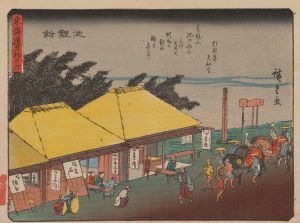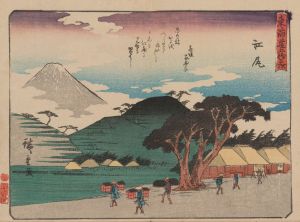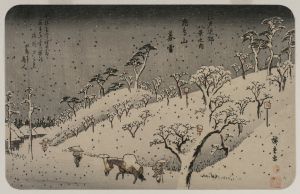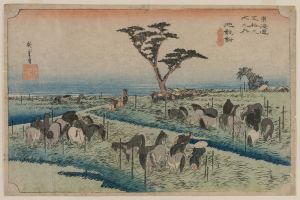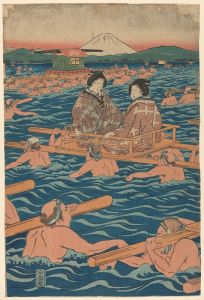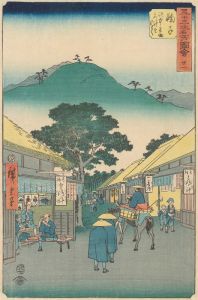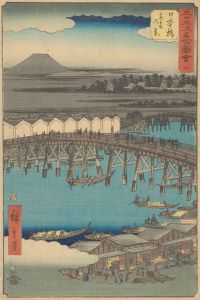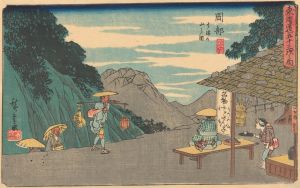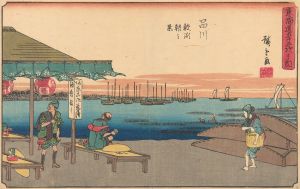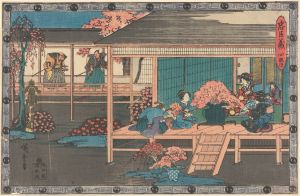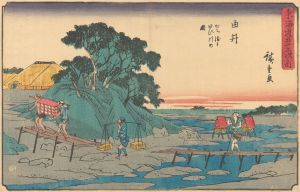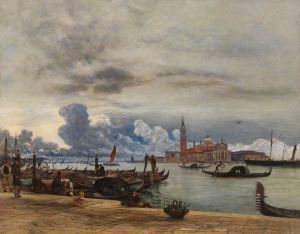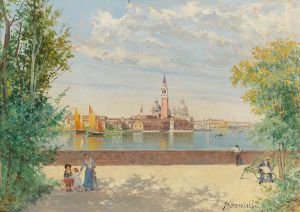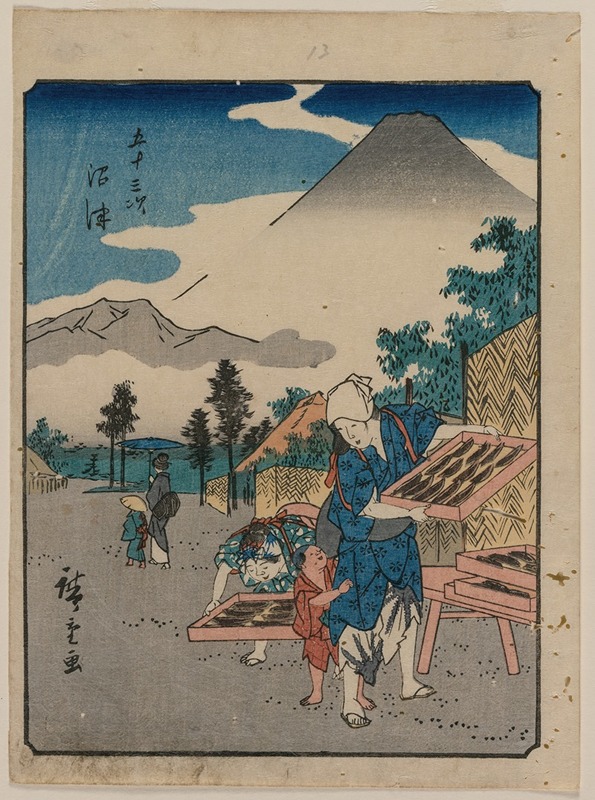
The Fifty-Three Stations of the Tokaido: Numazu
A hand-painted replica of Andō Hiroshige’s masterpiece The Fifty-Three Stations of the Tokaido: Numazu, meticulously crafted by professional artists to capture the true essence of the original. Each piece is created with museum-quality canvas and rare mineral pigments, carefully painted by experienced artists with delicate brushstrokes and rich, layered colors to perfectly recreate the texture of the original artwork. Unlike machine-printed reproductions, this hand-painted version brings the painting to life, infused with the artist’s emotions and skill in every stroke. Whether for personal collection or home decoration, it instantly elevates the artistic atmosphere of any space.
The Fifty-Three Stations of the Tokaido: Numazu is a woodblock print by the renowned Japanese ukiyo-e artist Andō Hiroshige. This print is part of Hiroshige's famous series "The Fifty-Three Stations of the Tokaido," which depicts the various post stations along the Tokaido road, a vital route connecting Edo (modern-day Tokyo) to Kyoto during the Edo period. The series was first published in the early 1830s and is considered one of Hiroshige's masterpieces, showcasing his skill in landscape art and his ability to capture the essence of Japanese scenery and daily life.
The Numazu print is the twelfth station in the series and illustrates the area around the Numazu post station. This station was an important stop for travelers on the Tokaido, located near the coast of Suruga Bay in present-day Shizuoka Prefecture. The scene depicted in the Numazu print is typical of Hiroshige's style, characterized by its atmospheric perspective and delicate use of color to convey the time of day and weather conditions.
In this particular print, Hiroshige captures a serene evening scene. The composition features travelers making their way along a path lined with tall pine trees, a common sight along the Tokaido road. The figures are depicted in silhouette, suggesting the fading light of dusk. In the background, the viewer can discern the faint outlines of the mountains, adding depth to the composition. Hiroshige's use of color is subtle yet effective, with shades of blue and gray dominating the scene, evoking a sense of calm and tranquility.
Hiroshige's work is celebrated for its ability to convey the beauty of the natural world and the human experience within it. His prints often include elements that reflect the changing seasons and the transient nature of life, themes that resonate deeply within Japanese culture. The Numazu print, like others in the series, captures a moment in time, offering a glimpse into the lives of those who traveled the Tokaido road.
The Fifty-Three Stations of the Tokaido series was highly popular in its time and remains influential today. Hiroshige's work has inspired countless artists, both in Japan and internationally, and his prints are considered quintessential examples of the ukiyo-e genre. The series not only serves as an artistic achievement but also as a historical document, providing insight into the landscapes and daily life of Edo-period Japan.
Hiroshige's ability to blend realism with poetic interpretation is evident in the Numazu print, making it a cherished piece within the series. The print exemplifies his mastery of composition, color, and the ability to evoke emotion through landscape art. Today, Hiroshige's prints, including the Numazu station, are held in high esteem and are part of numerous museum collections worldwide, continuing to captivate audiences with their timeless beauty and cultural significance.





